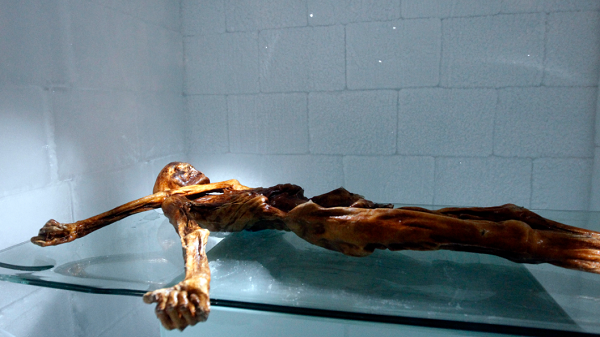Oetzi Iceman Update: Bacteria Found In Mummy's Stomach May Lead To Cancer Research

Almost 25 years after discovering a well-preserved mummy in the snowcaps of the Austrian-Italian border, scientists are still learning more information about the nearly 5,300-year-old Iceman from Bolzano, Italy.
During a mummy congress Monday, scientists planned to discuss their latest findings on the Iceman — the corpse of which has been nicknamed Oetzi since the discovery — including his background, how he died and whether a bacteria in his stomach could be a key clue toward cancer research, Phys.org reported.

The mummy was discovered by two hikers back in September 2001. Recent technology has provided new details about his diet and the bacteria found in his stomach — H. pylori — which doctors say could have been helpful in the digestion of raw meat back in Oetzi’s time, but has since evolved into more serious and sometimes even deadly bacteria. The same bacteria responsible for stomach ulcers can sometimes lead to cancer and is found in about 50 percent of human intestines.
Thanks to the 30 varieties of pollen found in Oetzi’s intestines and the isotopic composition of tooth enamel, scientists were able to suggest Oetzi was from a genetic subgroup of Europeans living just south of the Alps. His modern-day relatives would be a small group of rare Europeans living throughout Corsica and Sardinia.
Around 46 when he died, scientists found that Oetzi was lactose intolerant and genetically predisposed to heart disease. He was killed by an arrowhead lodged in his shoulder, which researchers believed caused him to bleed to death. He was finished off by a blow to his head.
Oetzi, who currently resides in Italy's South Tyrol Museum of Archeology, attracts more than 260,000 visitors a year. According to the Local, the mummy’s rising stardom has led to plans to construct a new, bigger museum.
© Copyright IBTimes 2025. All rights reserved.






















